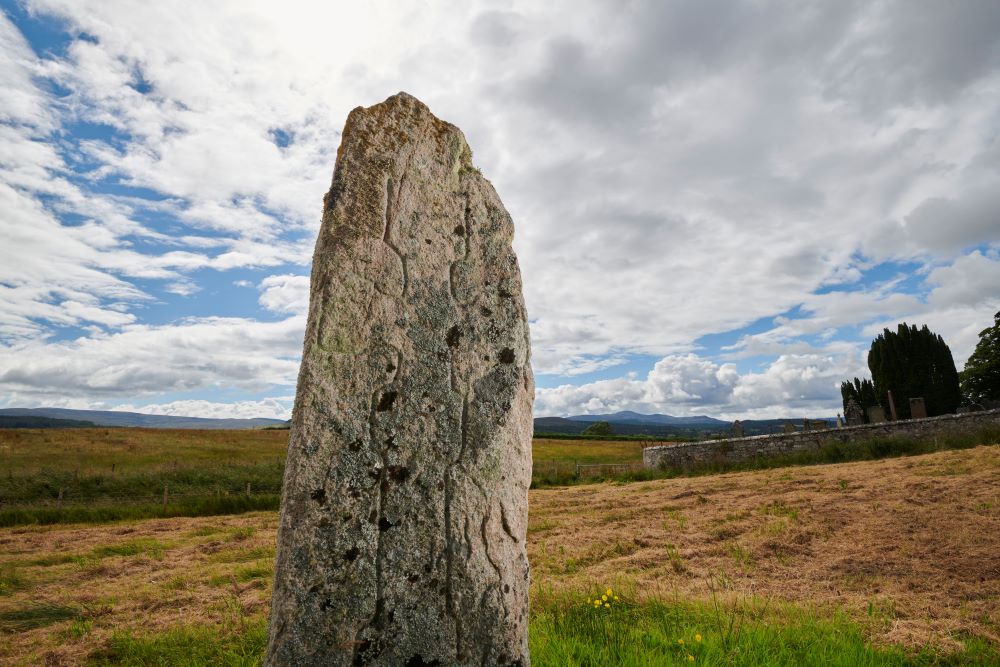New website and leaflet highlight the rich Pictish Heritage of the Highlands

The rich Pictish heritage of the Highland Council area is being highlighted this week with the launch of a new website, app and leaflet encouraging local people and visitors to explore 32 Pictish sites along an expanded Highland Pictish Trail.
The Picts dominated north and east Scotland from around 400AD for about 600 years, and the carved stones they left in the landscape, with their mysterious symbols, carvings of animals, and, later, intricately-carved Christian crosses and images of bible scenes, battles and hunting, have been a source of fascination for hundreds of years, along with their network of hill forts.
The original Highland Pictish Trail, which dates back more than 25 years, has now been extended to include 32 of the area’s most impressive and accessible Pictish sites, including carved stones set in superb scenery, museums and visitor centres where you can see impressive and thought-provoking carved stones and Pictish objects, and the mighty hill fort of Craig Phadrig (on the outskirts of Inverness) with its amazing views over the Beauly Firth and towards the Great Glen.
High Life Highland Chairman Ian Ross said: “This new project offers a great opportunity for residents and visitors to step back in time and discover life as it was 1,000 years ago. For many years, the Highlands were thought to be just an outpost of a Pictish kingdom in the Perthshire and Angus areas, but recent discoveries have shown the north was an important Pictish area in its own right – with major religious and royal centres of power, and strong links with Europe.
“I hope people will enjoy a weekend or during the upcoming school holidays learning about Pictish culture and society, whether through the app or by picking up one of the leaflets soon available from our museums or libraries.”
Chair of The Highland Council’s Tourism Committee, Councillor Gordon Adam said: ‘The new Highland Pictish Trail website www.highlandpictishtrail.co.uk not only provides information about all the sites on the Trail; it is also a unique guide to the latest expert thinking on Pictish culture and life in the north of Scotland and includes links to a wide range of online and printed sources of information for people who would like to find out more. In addition to the website, a new free app can be downloaded to help people explore Trail sites in a particular area or connected by a specific theme, while the new Highland Pictish Trail leaflet, which will soon be available in a range of local outlets including museums along the Trail, Visitor Information Centres and Highland libraries, is a handy free guide for when you are out and about or planning a Pictish-themed trip. And during the summer months, the Cromarty-Nigg ferry is a handy link between the Black Isle Pictish sites and Easter Ross sites of the Seaboard villages and the Portmahomack peninsula – a great day out!”
Dan Cotton, Chair of Museums and Heritage Highland said: ‘After all the stresses and strains of the last 18 months or so, the Highland Pictish Trail offers local people and visitors the chance to step back into a time when life in the Highlands was very different from today. You can admire the skill of the Pictish stone carvers, think about what the symbols and images are telling us about life here more than 1,000 years ago, and enjoy beautiful scenery and fresh Highland air. Exploring the Trail – whether for an afternoon, a day, a weekend or a week – is also a chance to explore and enjoy the food, drink, crafts and atmosphere of the distinctive Highland communities along the route. It’s is a real opportunity to slow down, immerse yourself in a different world, and re-charge your batteries. As many of the sites on the Trail are on or close to the NC500 route, we hope that NC500 visitors will also take advantage of the chance to enjoy this fascinating aspect of Highland culture.”
The Highland Pictish Trail project is a partnership of The Highland Council, High Life Highland and Museums and Heritage Highland and has received financial support from the Highland Council, the National Lottery Heritage Fund and Museums Galleries Scotland. Museums and Heritage Highland will be maintaining and updating the website and app when the current project ends.




